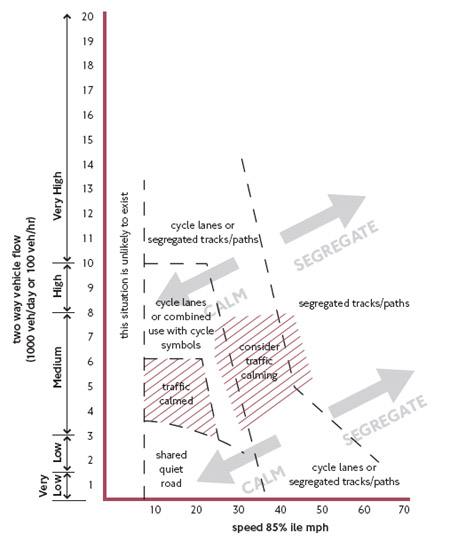London’s Cycling Design Standards: A Model for NYC?
As New York City begins fulfilling its commitment to build 200 miles of new bicycle lanes over the next three years, the question will increasingly arise: What kind of bike lane should go where? Currently, DOT seems not to have any set of guidelines to answer that question. So, take a look at how the City of London does it.
Transportation Alternatives’ bike program director Noah Budnick pointed me to the London Cycling Design Standards book. It is a remarkable document and, perhaps, a great model for New York City to follow.
The chart below can be found in Chapter 4, page 62. With vehicle volume on one axis and speed on the other, it establishes a general set of rules for when a street should have a physically-separated, "segregated" bike lane versus when bikes should mix with "calmed" motor vehicle traffic. Note that London has long-since stopped debating whether or not physically-separated bike lanes are a good and necessary thing.

